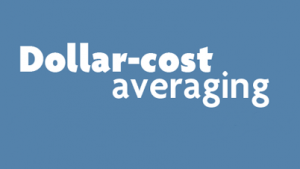Why Dollar-Cost Averaging Might Not Always be the Best Method

For many years Dollar-Cost Averaging has been a sound way of building an asset position in a portfolio, one of the early chapters in the financial planning 101 textbook. This long-term accumulation method involves purchasing a fixed dollar amount of an asset at regular intervals, without regard to the asset’s price. The textbook has long held that this type of wealth-building protects the position against market fluctuations and downside risk more than an all-in position might otherwise provide. In many situations this logic still holds, but is it correct for all long-term position allocations?
Dollar-Cost Averaging has been used as a blanket
In dollar-cost averaging, the fine print in the appendix of the textbook has long been ignored and the method has been applied as a blanket to cover virtually all scenarios. Market conditions, client net worth and present positions, income tax ramifications and portfolio type might create situations in which it is wiser to buy a full position in a shorter window than a longer-term asset accumulation method like dollar-cost averaging will allow.
Timing is Money
In a bear market, or an uncertain market where medium and long-term direction is still being determined, dollar-cost averaging definitively makes sense, especially for clients who are in the asset building phase.
However, in a bull market, or a market that is trending higher, dollar-cost averaging might be an opportunity cost, especially for those who are already have larger portfolios, or are moving assets from one position to another. If the “trend is your friend” and the trend is higher, is waiting to fully invest in a security truly the best method?
If an investor has already determined that he or she wants to invest a certain amount in either dollars or shares of a particular asset and currently has the money for the full allocation, if the trend truly is higher in the short and medium-terms, the most logical investment method could be to purchase the full position at once to reap gains on all time horizons. To mix metaphors properly: timing is money. There is an opportunity cost associated with leaving money in a position that has already been determined to be incorrect or insufficient, along with the arbitrage lost from the position determined to be the better long-term fit.
Inflows are Key
It is clear that if a client does not have the resources to acquire the full amount of the desired position, dollar-cost averaging is often the best available method. If the client has determined that a new position will be a long-term hold and it will take time to get there, the quickest, truest, path might very well be Dollar-Cost Averaging. The inflows to the portfolio for additional purchases are the key. For example, if the portfolio is a 401k, dollar-cost averaging is essentially baked into the formula already.
Inflows to 401ks are usually steady per pay period. For other retirement accounts, like Traditional or Roth IRAs, that might only have annual inflows, a Dollar-Cost Average might not be as prudent. This same caveat would suffice for higher net-worth investors as well who can afford to invest in a full position at one time.
For many, if not most, situations, Dollar-Cost Averaging is a prudent, sound, long-term investment strategy for asset accumulation. When a particular asset has been determined to be one that the client wants to have in his or her portfolio for a long period time, hedging against downside risk and playing the game slow and steady is surely an intelligent methodology. However, in some instances Dollar-Cost Averaging creates an opportunity cost that can out-weigh any benefit. For these types of situations, a rising market, moving one long-term position into another, or investing a larger sum, an all-in position accumulation method might be something to consider.
